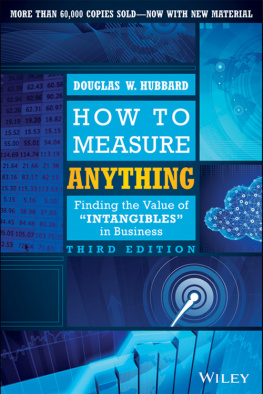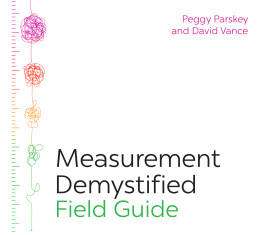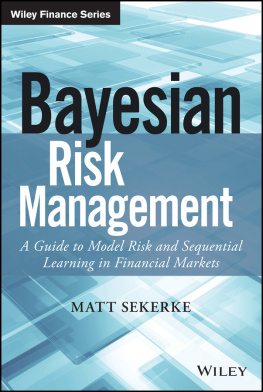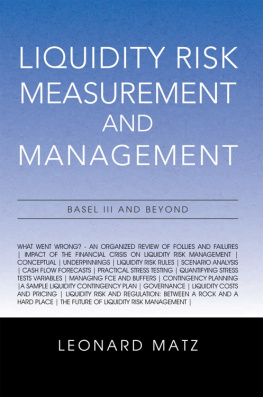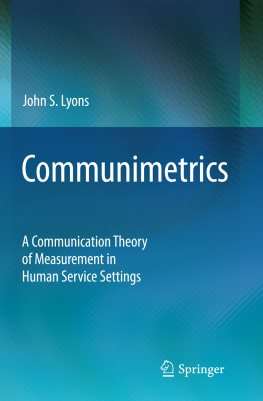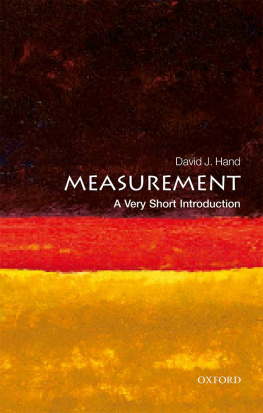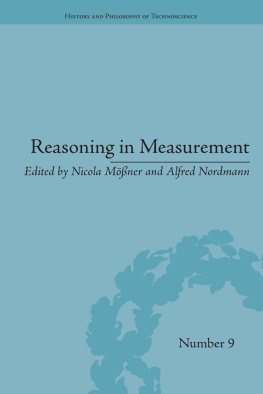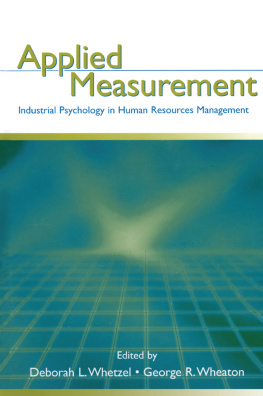
Cover design: Wiley
Cover image: iStockphoto.com (clockwise from the top); graphxarts,
elly99, derrrek , procurator, Olena_T, miru5
Copyright 2014 by Douglas W. Hubbard. All rights reserved.
Published by John Wiley & Sons, Inc., Hoboken, New Jersey.
First edition published by John Wiley & Sons, Inc., in 2007.
Second edition published by John Wiley & Sons, Inc., in 2010.
Published simultaneously in Canada.
No part of this publication may be reproduced, stored in a retrieval system, or transmitted in any form or by any means, electronic, mechanical, photocopying, recording, scanning, or otherwise, except as permitted under Section 107 or 108 of the 1976 United States Copyright Act, without either the prior written permission of the Publisher, or authorization through payment of the appropriate per-copy fee to the Copyright Clearance Center, Inc., 222 Rosewood Drive, Danvers, MA 01923, (978) 750-8400, fax (978) 646-8600, or on the Web at www.copyright.com. Requests to the Publisher for permission should be addressed to the Permissions Department, John Wiley & Sons, Inc., 111 River Street, Hoboken, NJ 07030, (201) 748-6011, fax (201) 748-6008, or online at http://www.wiley.com/go/permissions.
Limit of Liability/Disclaimer of Warranty: While the publisher and author have used their best efforts in preparing this book, they make no representations or warranties with respect to the accuracy or completeness of the contents of this book and specifically disclaim any implied warranties of merchantability or fitness for a particular purpose. No warranty may be created or extended by sales representatives or written sales materials. The advice and strategies contained herein may not be suitable for your situation. You should consult with a professional where appropriate. Neither the publisher nor author shall be liable for any loss of profit or any other commercial damages, including but not limited to special, incidental, consequential, or other damages.
For general information on our other products and services or for technical support, please contact our Customer Care Department within the United States at (800) 762-2974, outside the United States at (317) 572-3993, or fax (317) 572-4002.
Wiley publishes in a variety of print and electronic formats and by print-on-demand. Some material included with standard print versions of this book may not be included in e-books or in print-on-demand. If this book refers to media such as a CD or DVD that is not included in the version you purchased, you may download this material at http://booksupport.wiley.com. For more information about Wiley products, visit www.wiley.com.
Library of Congress Cataloging-in-Publication Data
Hubbard, Douglas W., 1962
How to measure anything : finding the value of intangibles in business /
Douglas W. Hubbard.Third edition.
pages cm
Includes bibliographical references and index.
ISBN 978-1-118-53927-9 (cloth); ISBN 978-1-118-83644-6 (ebk);
ISBN 978-1-118-83649-1 (ebk)
1. Intangible propertyValuation. I. Title.
HF5681.I55H83 2014
657'.7dc23
2013044540
I dedicate this book to the people who are my inspirations
for so many things: to my wife, Janet, and to our children,
Evan, Madeleine, and Steven, who show every potential
for being Renaissance people.
I also would like to dedicate this book to the military men
and women of the United States, so many of whom I know
personally. I've been out of the Army National Guard for
many years, but I hope my efforts at improving battlefield
logistics for the U.S. Marines by using better measurements
have improved their effectiveness and safety.
Preface to the Third Edition
I cant speak for all authors, but I feel that a bookespecially one based largely on ongoing researchis never really finished. This is precisely what editions are for. In the time since the publication of the second edition of this book, I continue to come across fascinating published research about the power and oddities of human decision making. And as my small firm continues to apply the methods in this book to real-world problems, I have even more examples I can use to illustrate the concepts. Feedback from readers and my experience explaining these concepts to many audiences have also helped me refine the message.
Of course, if the demand for the book wasnt still strong six years after the first edition was published, Wiley and I wouldnt be quite as incentivized to publish another edition. We also found this book, written explicitly for business managers, was catching on in universities. Professors from all over the world were contacting me to say they were using this book in a course they were teaching. In some cases it was the primary texteven though How to Measure Anything (HTMA) was never written as a textbook. Now that we see this growing area of interest, Wiley and I decided we should also create an accompanying workbook and instructor materials with this edition. Instructor materials are available at www.wiley.com .
In the time since I wrote the first edition of HTMA, Ive written a second edition (2010) and two other titlesThe Failure of Risk Management: Why Its Broken and How to Fix It and Pulse: The New Science of Harnessing Internet Buzz to Track Threats and Opportunities. I wrote these books to expand on ideas I mention in earlier editions of How to Measure Anything and I also combine some of the key points I make in these books into this new edition.
For example, I started writing The Failure of Risk Management because I felt that the topic of risk, on which I could spend only one chapter and a few other references in this book, merited much more space. I argued that a lot of the most popular methods used in risk assessments and risk management dont stand up to the bright light of scientific scrutiny. And I wasnt just talking about the financial industry. I started writing the book well before the financial crisis started. I wanted to make it just as relevant to another Hurricane Katrina, tsunami, or 9/11 as to a financial crisis. My third book, Pulse, deals with what I believe to be one of the most powerful new measurement instruments of the twenty-first century. It describes how the Internet and, in particular, social media can be used as a vast data source for measuring all sorts of macroscopic trends. Ive also written several more articles, and the combined research from them, my other books, and comments from readers on the books website to create new material to add to this edition.
This edition also adds more philosophy about different approaches to probabilities, including what are known as the Bayesian versus frequentist interpretations of probability. These issues may not always seem relevant to a practical how-to business book, but I believe it is important as a foundation for better understanding of measurement methods in general. For readers not interested in these issues, Ive relegated some of the discussion to a series of Purely Philosophical Interludes found between some chapters, which the reader is free to study as their interests lead them. For readers who choose to delve into the Purely Philosophical Interludes, they will discover that I argue strongly for what is known as the subjective Bayesian approach to probability. While not as explicit until this edition, the philosophical position I argue for was always underlying everything Ive written about measurement. Some readers who have dug in their heels on the other side of the issue may take exception to some of my characterizations, but I believe I make the case that, for the purposes of decision analysis, Bayesian methods are the most appropriate. And I still discuss non-Bayesian methods both because they are useful by themselves and because they are so widely used that lacking some literacy in these methods would limit the readers understanding of the larger issue of measurement.
Next page
